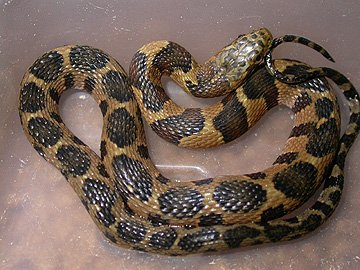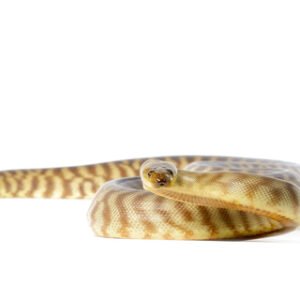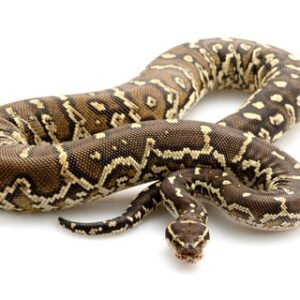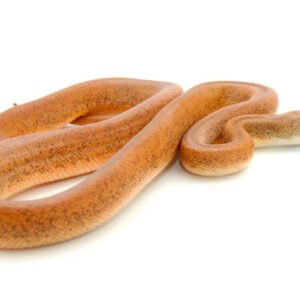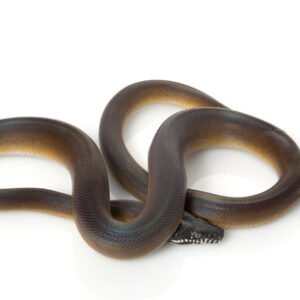The Midland Water Snake: An Overview of Its Habitat, Behavior, and Conservation
Introduction to the Midland Water Snake
The Midland Water Snake (Nerodia sipedon pleuralis) is a semi-aquatic reptile belonging to the family Colubridae, native to the midwestern United States. This snake is often found in freshwater environments, such as ponds, lakes, and streams, where it plays a crucial role in maintaining the ecological balance. Recognized by its distinct features, the Midland Water Snake exhibits a range of physical traits that set it apart from other snake species inhabiting similar territories.
Typically, adult Midland Water Snakes reach lengths of 24 to 42 inches, with some exceptional individuals surpassing this range. Their bodies are robust and elongated, presenting a coloration that can vary significantly. The most common hues include a brownish or grayish base, characterized by dark bands or blotches running down the length of the body. This coloration aids in camouflage, allowing them to blend seamlessly with their surroundings, thereby evading predators and enhancing their efficiency as hunters.
One of the distinguishing characteristics of the Midland Water Snake is its wide, flattened head, which is often broader than its neck. This anatomical feature is particularly useful when navigating through water, as it allows for better maneuverability. Furthermore, the presence of keeled scales on its dorsal side contributes to their rough texture. The Midland Water Snake’s eyes are positioned high on the head, which facilitates observation while remaining mostly submerged, further enhancing its predatory capabilities.
Despite their somewhat intimidating appearance, Midland Water Snakes are non-venomous and primarily rely on their size and strength to capture prey, such as fish and amphibians. Through their unique adaptations, these snakes have carved out a vital niche within their aquatic habitats, highlighting their significance in the broader ecosystem.
Habitat and Distribution
The Midland Water Snake (Nerodia sipedon pleuralis) is a semi-aquatic species widely distributed across several regions of North America. This snake primarily inhabits wetland ecosystems, which include a variety of water bodies such as ponds, marshes, rivers, and lakes. These environments are crucial for their survival as they offer ample foraging opportunities as well as essential sites for reproduction and shelter.
Wetlands play a significant role in supporting the Midland Water Snake’s lifestyle. This species prefers areas with dense vegetation, which aids in camouflage from predators and enhances hunting efficiency. The presence of aquatic prey, including fish and amphibians, influences the distribution of these snakes. They can frequently be observed basking on rocks or submerged logs, a behavior vital for thermoregulation.
Geographically, the Midland Water Snake is found primarily in the eastern United States, extending into parts of the Midwest and southern regions of Canada. States such as Ohio, Indiana, Illinois, and Michigan are known habitats where these snakes thrive. Their presence is typically associated with shallow water bodies where they can easily hunt and navigate. While human activities, such as urban development and pollution, pose threats to their habitats, certain areas remain protected, allowing for the continuation of stable populations.
Environmental conditions, including temperature and water quality, significantly impact the distribution of the Midland Water Snake. They thrive in environments with ample access to fresh water and abundant prey, which contribute positively to their overall health and reproductive success. Conservation efforts play an essential role in preserving these critical wetland habitats, thereby ensuring the long-term survival of the Midland Water Snake across its natural range.
Behavior and Diet
The Midland Water Snake (Nerodia sipedon) exhibits a diverse range of behaviors that are intricately linked to its aquatic habitat. These snakes are semi-aquatic, which means they are well adapted to both swimming and navigating terrestrial environments. Their movement patterns often consist of basking on rocks or logs near the water’s edge before they enter the water to hunt or escape potential threats. When swimming, Midland Water Snakes display adeptness, utilizing lateral undulations to propel themselves effectively through their habitats. Their swimming agility is complemented by their ability to remain submerged for extended periods, enabling them to ambush prey without warning.
The Midland Water Snake primarily preys on a variety of aquatic creatures that thrive in its natural habitat. Fish and amphibians comprise a significant portion of its diet, which aligns with the snake’s predatory behaviors. Using a hunting technique known as ambush predation, the Midland Water Snake will often remain motionless, blending into its surroundings while it waits for unsuspecting prey to come within striking distance. Once the prey is close enough, the snake swiftly strikes and captures it using its sharp, backward-facing teeth that prevent escape. This efficient hunting strategy is critical for their survival, as it allows them to exploit the abundant resources in freshwater environments.
In addition to their solitary behavior while hunting, Midland Water Snakes can also exhibit social interactions, particularly during the mating season. Males may engage in competitive displays to assert dominance and attract females. These social dynamics can sometimes influence movement patterns, particularly in areas where several snakes inhabit the same region. Overall, the behavior and diet of the Midland Water Snake showcase a remarkable adaptation to an aquatic lifestyle, enabling them to thrive in diverse freshwater ecosystems.
Conservation Status and Threats
The Midland Water Snake (Nerodia sipedon pleuralis) plays a crucial role in maintaining the health of aquatic ecosystems, yet it faces significant threats that jeopardize its population. The foremost challenge confronting this species is habitat destruction, primarily driven by urbanization, agricultural expansion, and the modification of natural waterways. Wetland drainage and the development of shorelines disrupt the Midland Water Snake’s breeding and foraging grounds, leading to decreased population numbers.
In addition to habitat destruction, pollution poses a serious risk. Contaminants such as pesticides, heavy metals, and plastics can infiltrate water bodies, adversely affecting the Midland Water Snake and its prey species. These pollutants not only diminish the snake’s natural habitat but can also lead to health issues within the population, making it harder for them to thrive. Moreover, climate change amplifies these threats, as rising temperatures and altered precipitation patterns may further modify their habitats and food availability.
In the face of these challenges, several conservation efforts have been initiated to protect the Midland Water Snake. State and federal legislation, such as the Endangered Species Act, helps to safeguard critical habitats from further development and degradation. Conservation organizations also play a vital role, spearheading local initiatives aimed at habitat restoration and public education. These efforts include community clean-up events, advocacy campaigns, and educational programs designed to raise awareness about the significance of the Midland Water Snake within its ecosystem.
Engaging local communities in conservation efforts is essential, as it fosters a sense of ownership and responsibility towards the protection of the snake and its habitat. Educational initiatives can help dispel misconceptions about snakes, highlighting their ecological importance and promoting coexistence. Ultimately, through comprehensive conservation strategies, it is possible to mitigate the threats faced by the Midland Water Snake, ensuring its survival for future generations.

